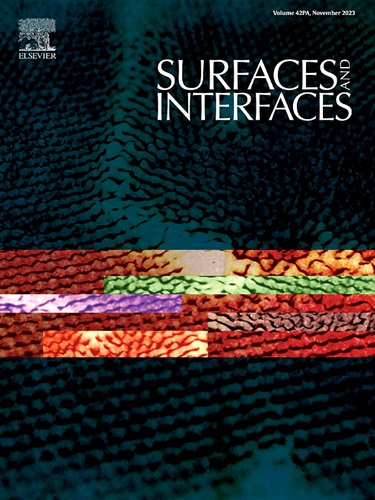Copper-functionalized hydroxyapatite nanoparticles to counteract fungal infections
IF 5.7
2区 材料科学
Q2 CHEMISTRY, PHYSICAL
引用次数: 0
Abstract
Drug-resistant fungal pathogens pose an increasing threat to human health. Nanoparticles are promising tools for treating and limiting fungal resistance due to their ability to attack microorganisms via multiple mechanisms. In this work, hydroxyapatite (HA) nanoparticles were synthesized and functionalized with copper by ionic exchange at different solution concentrations (from 0.01 to 0.2 M). The physico-chemical properties of the samples were studied using low-temperature N2 adsorption volumetry, elemental analysis, X-ray diffraction, electron microscopy and IR spectroscopy of adsorbed CO. All the obtained HA particles were poorly crystalline, elongated in the c-axis direction, and had a high specific surface area (ca. 200 m2/g). Copper was incorporated into HA surface layers with a Cu2+ doping content proportional to the initial concentration, reaching a maximum value of 14 %wt. The antifungal activity of the samples was tested against drug-resistant clinical isolates of Cryptococcus neoformans and several Candida species strains (C. parapsilosis, C. krusei, C. tropicalis, C. albicans, C. glabrata, C. auris). Minimal inhibitory concentrations and fungal growth curves were determined. Cytocompatibility evaluation showed that both undoped and Cu-doped HA samples were not toxic to mammalian cells. The Cu-containing HA samples demonstrated potential as effective and safe antifungal agents with wide-spectrum activity, representing a promising candidate for therapeutic approaches against diverse fungal infections.

求助全文
约1分钟内获得全文
求助全文
来源期刊

Surfaces and Interfaces
Chemistry-General Chemistry
CiteScore
8.50
自引率
6.50%
发文量
753
审稿时长
35 days
期刊介绍:
The aim of the journal is to provide a respectful outlet for ''sound science'' papers in all research areas on surfaces and interfaces. We define sound science papers as papers that describe new and well-executed research, but that do not necessarily provide brand new insights or are merely a description of research results.
Surfaces and Interfaces publishes research papers in all fields of surface science which may not always find the right home on first submission to our Elsevier sister journals (Applied Surface, Surface and Coatings Technology, Thin Solid Films)
 求助内容:
求助内容: 应助结果提醒方式:
应助结果提醒方式:


